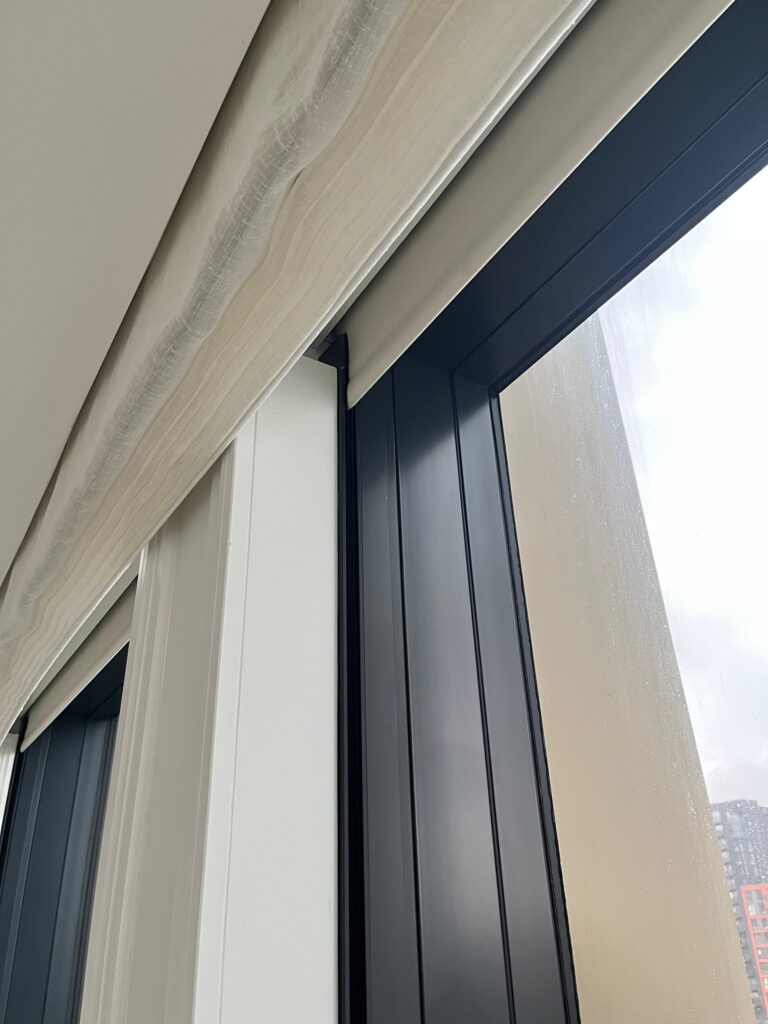
Specifying blinds for hotel rooms
Hotel guests have high expectations when it comes to the level of finish and functionality within their room. And rightly so, as they pay to stay in a comfortable and luxurious space.
Window coverings have a big part to play in creating this environment. Therefore, we’ve explored the different factors designers, architects and contractors should consider when it comes to specifying blinds for hotel rooms, and identified some of the window treatment issues hotels face.
Hotel pain points
We sat down with Jake Whiteside, Business Development Director for hotel interior specialists Envisage, and Hospitality Interior Design Specialist and founder of LR Interiors, Lauren Roberts, to discuss this subject in greater detail.
According to Whiteside, there are two common pain points hotels face when it comes to window coverings.
There are two key things. One is damage from misuse by guests, probably not maliciously but just through bad handling.
The other is light spill. Blinds that fit within the reveal and allow daylight to come in around the sides are not a good choice for hotels.
And Roberts concurs, highlighting damage as the key issue.
In hotels, the longevity of their window treatments is really important. People can be a bit heavy handed with long curtains and blinds, and over time that means costly repairs.
The solution
So how do designers, architects and contractors go about resolving these issues? Of course, no matter what window covering you choose, there will always be a risk of guests causing damage to the blinds.
However, opting for a motorised solution reduces the chances of this happening, as they’re operated by a radio remote control, wall switch or a hardwired wall switch through a motor control relay.
Therefore, guests can raise and lower blinds without needing to use a manual chain, which can often be the cause of a problem.
Motorised systems themselves can be vulnerable to damage too, though. For instance, if items like suitcases or clothing are left in the window reveal, the blinds or curtains could come into contact with them and harm the fabric or mechanism.
To avoid this, we would recommend blackout blinds with zipped side channels and obstacle detection motors. Not only does this eliminate light spill, but the detection systems is able to stop the motor running when the blind is meeting resistance, which prevents any damage to blind or the belongings.
Advanced systems
To take the guest experience to the next level, designers, architects and contractors can look at integrating motorised blinds to a guestroom management system.
Take Lutron’s myRoom as an example, the system allows guests to control the lighting, temperature and shading of the room using a mobile app or intuitive touchpad.
Furthermore, while it dramatically improves the guest experience, the hotel staff benefit too. The Guest Presence Detection feature allows housekeeping staff to see when a room has been vacated, helping them to work efficiently by only visiting rooms that are not occupied.
In addition to this, myRoom also switches the thermostat to an economy mode whilst the room is vacant, which improves the energy efficiency of the hotel.
2023 trends
Another factor to consider when specifying motorised blinds for hotels is how the systems will match the current interior design trends.
Ensuring the blinds align with the style of the room and add to the aesthetics is key, and Roberts believes some of the larger hotel companies are already starting to pick up on this.
Motorised blinds and curtains are likely to become a staple in big brand hotels. That will filter down into smaller hotel chains when they can see the benefit of the investment and maybe as they become more accessible and widely used.
Whiteside agrees, suggesting motorised blinds certainly have a role to play when it comes to interior trends this year.
The profile of the average traveller has changed since COVID and hotels are trying to adjust their offering to suit. It’s not an easy thing to do because this is not just a one-time changeover, but more of a moving scene. Therefore I see hotels being more versatile and trying to cater for a wider range of guests.
Personally, I would immediately connect this product with the corporate hotel market, but the convenience and ‘coolness’ of motorised blinds is potentially something that would sit well in certain designs elsewhere too.
If there are blinds that work efficiently and can be manufactured in some really interesting materials to set them distinctly apart from anything you would see in an office, then there could be an increasing trend to specify them, particularly in new build hotels.
Conclusion
Motorised blinds provide designers, architects and contractors with an excellent option for window covering in a hotel room.
Not only do they minimise the risk of guest damage and eliminate any light entering the room, but motorised blinds align with the trends of the industry. Last year we saw a 57% increase in the production of motorised roller blinds at our manufacturing facility in Luton, and a 16% decrease in manual rollers.
An emphasis appears to have been placed on using motorised systems to improve the guest experience, aesthetics of a room and a building’s energy efficiency.
And sustainability will be one of the biggest priorities when it comes to the future of hotel design, Roberts suggests.
From a design standpoint I think sustainability and longevity in hotel interiors is going to be a top focus. Anything that can be done to reduce the construction industry’s affect on the planet is of great importance.
If you’d like to discuss motorised systems for your project, please get in touch with us here and one of our expert team can assist you!

